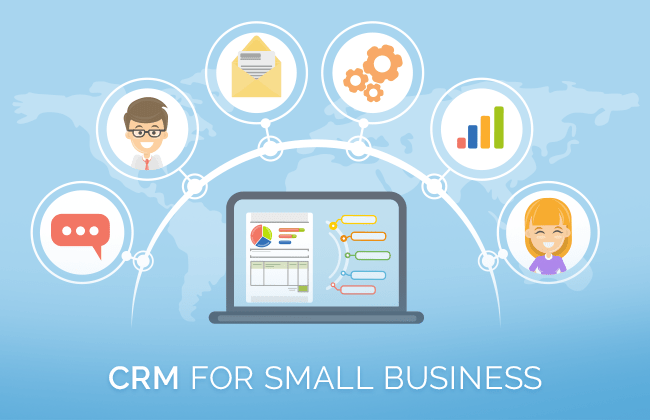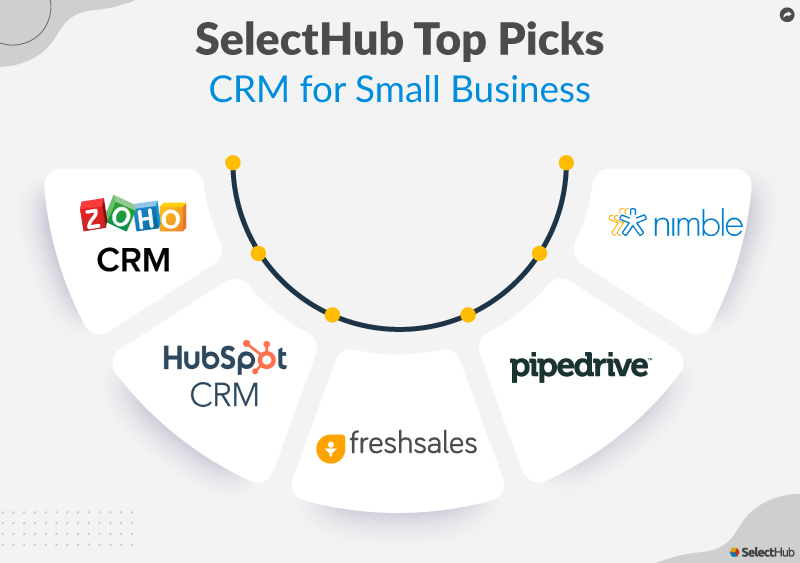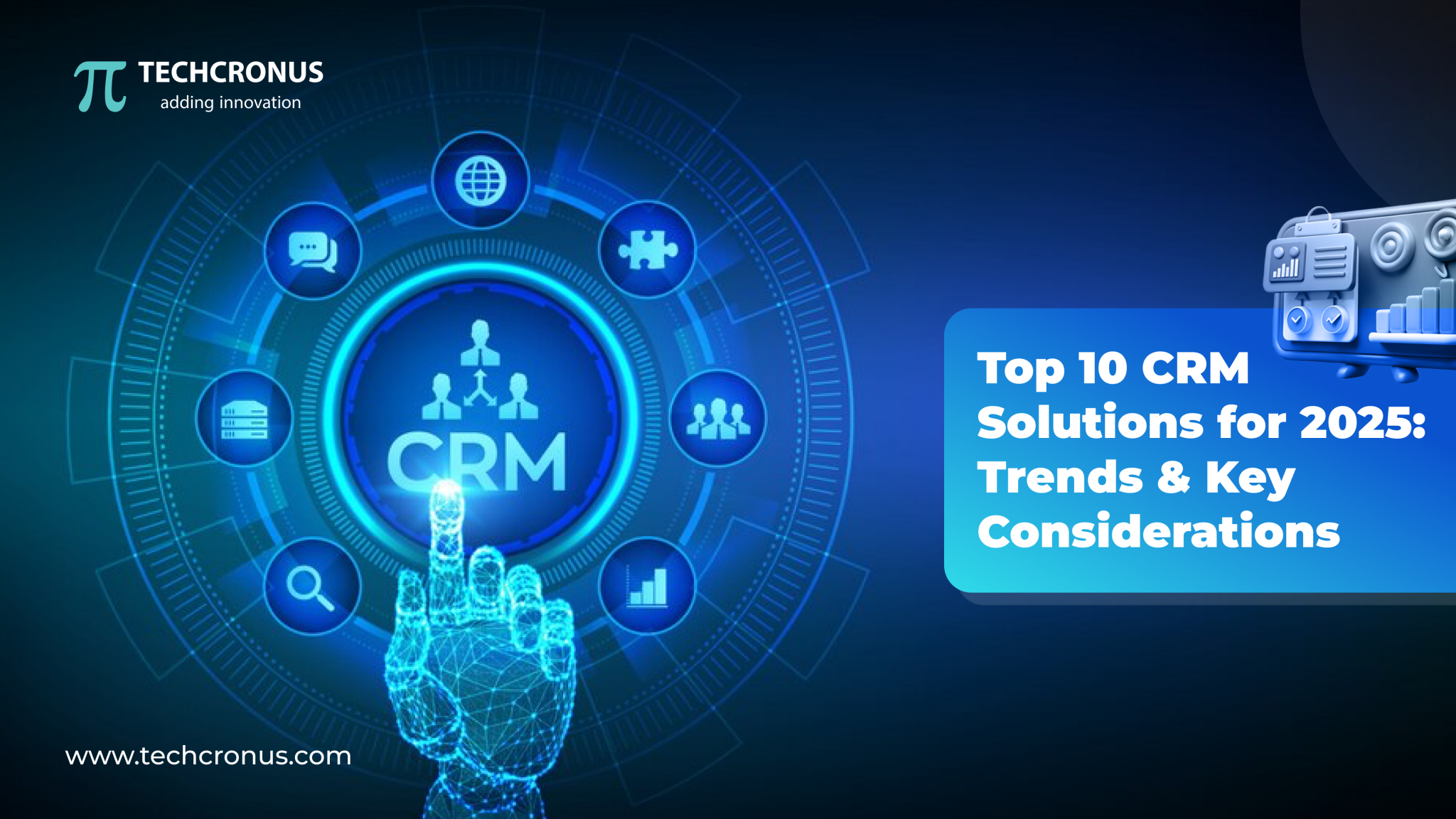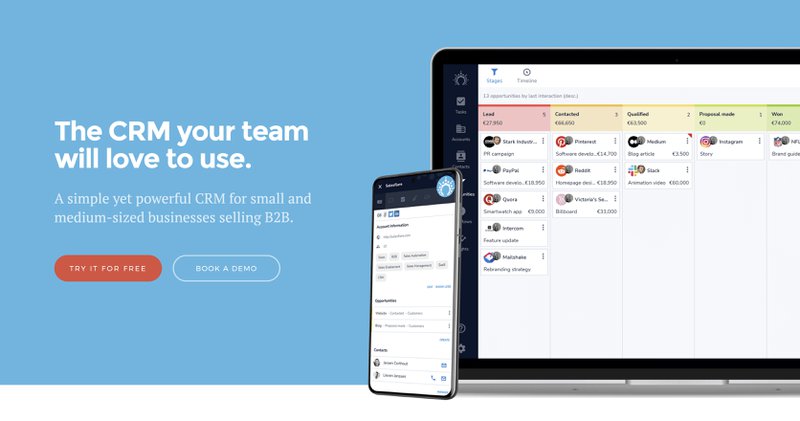
The Power of Collaboration in a Small Business Setting
Running a small business is a whirlwind. You’re juggling a million things – from sales and marketing to customer service and operations. In this fast-paced environment, effective collaboration isn’t just a nice-to-have; it’s a necessity. It’s the engine that drives efficiency, innovation, and ultimately, growth. Without seamless teamwork, your business can quickly become a tangled mess of miscommunication, duplicated efforts, and missed opportunities.
Think about it: when your sales team isn’t aware of a customer’s past interactions with your support team, they might offer the same solution twice, frustrating the customer and wasting their own time. When marketing doesn’t know what products are selling well, they might promote the wrong ones, leading to wasted ad spend. These scenarios highlight the crucial need for a system that connects all your departments, allowing them to share information and work together towards common goals. This is where a Customer Relationship Management (CRM) system steps in, becoming a central hub for all things customer-related and a powerful tool for fostering collaboration.
In this article, we’ll dive deep into how a CRM system can revolutionize collaboration within your small business. We’ll explore the benefits, features, and best practices for implementing a CRM that truly empowers your team and boosts your bottom line.
What is CRM, and Why Does it Matter for Collaboration?
At its core, a CRM system is a software solution designed to manage and analyze customer interactions and data throughout the customer lifecycle. It’s more than just a contact database; it’s a comprehensive platform that helps you understand your customers better, personalize your interactions, and ultimately, build stronger relationships. But its impact extends far beyond just customer management.
For collaboration, a CRM acts as a central repository of information. Instead of siloed data scattered across spreadsheets, email inboxes, and individual memories, a CRM brings everything together in one accessible place. This means that anyone on your team, from sales reps to support agents, can quickly access the information they need to provide excellent customer service and make informed decisions. It removes the guesswork and ensures everyone is on the same page.
Here’s how a CRM fuels collaboration:
- Centralized Data: All customer information, including contact details, purchase history, support tickets, and communication logs, is stored in a single, accessible location.
- Shared Access: Different team members can access and update customer information based on their roles and permissions.
- Improved Communication: CRM systems often include features like internal messaging and activity tracking, making it easier for team members to communicate and collaborate on customer-related tasks.
- Workflow Automation: CRM can automate repetitive tasks, such as sending follow-up emails or assigning leads, freeing up your team to focus on more strategic activities.
- Reporting and Analytics: CRM provides valuable insights into customer behavior and sales performance, helping you identify areas for improvement and make data-driven decisions.
In essence, a CRM system breaks down the walls between departments, fostering a culture of transparency and collaboration that leads to increased efficiency, improved customer satisfaction, and ultimately, business growth.
Key Features of a CRM System That Enhance Collaboration
Not all CRM systems are created equal. The best CRM for your small business will depend on your specific needs and goals. However, certain features are essential for promoting collaboration and should be at the top of your list when evaluating different options.
1. Contact Management
This is the foundation of any CRM. It allows you to store and manage customer contact information, including names, email addresses, phone numbers, and social media profiles. Look for a CRM that allows you to easily segment your contacts, create custom fields, and import and export data. Having well-organized contact information is the first step in ensuring everyone on your team has access to the information they need.
2. Sales Force Automation (SFA)
SFA features help automate and streamline the sales process. This includes lead management, opportunity tracking, and sales forecasting. A good SFA system will allow your sales team to easily track their progress, manage their pipelines, and collaborate on deals. This ensures that everyone is aware of the current status of each opportunity and can contribute to closing sales.
3. Marketing Automation
Marketing automation features help you automate marketing tasks, such as email campaigns, social media posting, and lead nurturing. By automating these tasks, you can free up your marketing team to focus on more strategic activities. Marketing automation also helps you track the effectiveness of your marketing campaigns, providing valuable insights into what’s working and what’s not. When marketing and sales are aligned through a CRM, lead qualification becomes much more efficient.
4. Customer Service and Support
Customer service features allow you to manage customer inquiries, track support tickets, and provide excellent customer service. Look for a CRM that integrates with your existing support channels, such as email, phone, and live chat. This will ensure that all customer interactions are tracked in one place, allowing your support team to quickly access customer information and resolve issues efficiently. When customer service and sales teams can easily share information, they can provide a more unified and satisfying customer experience.
5. Reporting and Analytics
Reporting and analytics features provide you with valuable insights into your sales performance, customer behavior, and marketing effectiveness. A good CRM will allow you to create custom reports and dashboards, so you can track the metrics that matter most to your business. These insights can be shared across teams to inform decision-making and drive continuous improvement.
6. Integrations
The ability to integrate with other business applications, such as email marketing platforms, accounting software, and social media channels, is crucial for maximizing the value of your CRM. Integrations allow you to connect your CRM to the tools you already use, streamlining your workflows and eliminating the need to manually transfer data between systems.
7. Mobile Access
In today’s mobile world, it’s essential to have a CRM that offers mobile access. This allows your team to access customer information and update data from anywhere, at any time. This is particularly important for sales reps who are often on the road.
Benefits of CRM-Driven Collaboration for Small Businesses
Implementing a CRM system and fostering a collaborative environment can lead to a myriad of benefits for your small business. Here are some of the most significant:
- Improved Customer Satisfaction: By providing a 360-degree view of the customer, a CRM enables your team to personalize interactions and provide better service. This leads to happier customers who are more likely to remain loyal and recommend your business to others.
- Increased Sales: With a CRM, your sales team can track leads more effectively, manage their pipelines more efficiently, and close deals faster. The increased visibility into the sales process allows for better forecasting and resource allocation.
- Enhanced Marketing Effectiveness: CRM data allows you to segment your audience, personalize your marketing campaigns, and track the effectiveness of your efforts. This leads to higher conversion rates and a better return on investment (ROI).
- Greater Efficiency: By automating repetitive tasks and streamlining workflows, a CRM frees up your team to focus on more strategic activities. This leads to increased productivity and reduced operational costs.
- Better Communication and Collaboration: A CRM provides a central hub for all customer-related information, making it easier for team members to communicate and collaborate on customer-related tasks. This leads to improved teamwork and a more cohesive work environment.
- Data-Driven Decision Making: CRM systems provide valuable insights into your sales performance, customer behavior, and marketing effectiveness. This allows you to make data-driven decisions that improve your business performance.
- Reduced Costs: By streamlining processes and improving efficiency, a CRM can help you reduce costs associated with manual data entry, duplicated efforts, and missed opportunities.
- Increased Employee Productivity: By automating tasks and providing easy access to information, a CRM frees up your employees to focus on higher-value activities, leading to increased productivity and job satisfaction.
These benefits combine to create a powerful cycle of growth. Improved customer satisfaction leads to increased sales, which in turn fuels further investment in marketing and customer service. This cycle, powered by a collaborative CRM, can propel your small business to new heights.
Implementing a CRM System: Best Practices for Small Businesses
Successfully implementing a CRM system requires careful planning and execution. Here are some best practices to follow to ensure a smooth transition and maximize the benefits of your CRM:
1. Define Your Goals and Objectives
Before you even start looking at CRM systems, take the time to define your goals and objectives. What do you hope to achieve with a CRM? What problems are you trying to solve? Having a clear understanding of your goals will help you choose the right CRM system and tailor it to your specific needs. Consider what data points are critical for your business and how different departments can benefit from shared access to this information. This clarity will also help you measure the success of your implementation.
2. Choose the Right CRM System
With so many CRM systems on the market, choosing the right one can be overwhelming. Research different options, considering factors like price, features, ease of use, and integration capabilities. Look for a CRM that is specifically designed for small businesses, as these often offer the features and support you need at an affordable price. Consider cloud-based CRM systems, as they are generally easier to implement and maintain than on-premise solutions. Read reviews, request demos, and compare different options to find the perfect fit for your business.
3. Plan Your Implementation
Once you’ve chosen a CRM system, create a detailed implementation plan. This plan should include timelines, responsibilities, and milestones. Consider factors like data migration, user training, and system customization. Don’t try to do everything at once. Start with a phased approach, implementing the core features first and then gradually adding more functionality as your team becomes comfortable with the system. A well-structured plan will minimize disruption and ensure a successful implementation.
4. Migrate Your Data
Migrating your existing data into the new CRM system is a critical step. Clean and organize your data before migrating it to ensure accuracy and consistency. Map your data fields to the corresponding fields in the CRM system. Consider using a data migration tool or working with a CRM consultant to simplify the process. Accurate data is essential for the CRM to function effectively and deliver the insights you need.
5. Train Your Team
Proper training is essential for ensuring that your team knows how to use the CRM system effectively. Provide comprehensive training on all the features and functionalities of the system. Offer ongoing support and training to address any questions or issues that arise. Encourage your team to use the CRM system regularly and to share their feedback. The more familiar your team is with the system, the more they will utilize it to collaborate and improve their performance.
6. Customize Your CRM
Customize your CRM system to meet your specific needs. This may involve creating custom fields, workflows, and reports. Tailor the system to your business processes to ensure that it aligns with your existing workflows. The more customized your CRM, the more effective it will be in helping your team collaborate and achieve your goals. Don’t be afraid to experiment and adjust your customizations as your business evolves.
7. Integrate with Other Systems
Integrate your CRM system with other business applications, such as email marketing platforms, accounting software, and social media channels. This will streamline your workflows and eliminate the need to manually transfer data between systems. Integration allows data to flow seamlessly between different departments, promoting collaboration and a unified view of the customer.
8. Monitor and Evaluate
Regularly monitor and evaluate the performance of your CRM system. Track key metrics, such as sales growth, customer satisfaction, and marketing ROI. Identify areas for improvement and make adjustments as needed. Continuously monitor your CRM’s usage and effectiveness to ensure it’s meeting your business needs and delivering the expected results. This iterative approach will help you maximize the value of your CRM over time.
9. Foster a Culture of Collaboration
The success of your CRM implementation depends on fostering a culture of collaboration within your organization. Encourage your team to share information, communicate openly, and work together towards common goals. Promote the use of the CRM system as a central hub for all customer-related information. Recognize and reward team members who actively use the CRM and contribute to a collaborative environment. A collaborative culture will encourage your team to embrace the CRM and use it to its full potential.
10. Seek Expert Help When Needed
Don’t hesitate to seek expert help when you need it. Consider working with a CRM consultant or vendor to help you with the implementation, customization, and training. They can provide valuable insights and guidance to ensure that your CRM system is set up correctly and that your team is using it effectively. Investing in expert help can save you time, money, and frustration in the long run.
Choosing the Right CRM for Your Small Business: Considerations
Selecting the ideal CRM system for your small business involves careful consideration of several factors. Here are some key aspects to evaluate during your decision-making process:
1. Budget
CRM systems vary widely in price, from free or freemium options to enterprise-level solutions. Determine your budget upfront and look for systems that fit within your financial constraints. Consider not only the initial cost but also ongoing costs, such as subscription fees, training, and support. Remember that the cheapest option isn’t always the best, as it might lack the features and functionality you need. Weigh the cost against the potential benefits and ROI.
2. Features and Functionality
Identify the specific features and functionalities you need to support your business processes. Make a list of your must-haves and nice-to-haves. Consider features like contact management, sales force automation, marketing automation, customer service and support, reporting and analytics, and integrations. Choose a CRM system that offers the features you need to achieve your business goals. Don’t pay for features you won’t use.
3. Ease of Use
Choose a CRM system that is easy to use and intuitive. The easier the system is to use, the more likely your team is to adopt it and use it effectively. Look for a CRM with a user-friendly interface, clear navigation, and helpful tutorials. Consider the level of technical expertise required to use the system and choose one that aligns with your team’s skill level. A complex system that is difficult to navigate will hinder collaboration, rather than help it.
4. Scalability
Choose a CRM system that can scale with your business. As your business grows, you’ll need a CRM system that can handle an increasing number of contacts, users, and data. Look for a system that offers flexible pricing plans and the ability to add new features and functionality as needed. Consider the long-term growth potential of your business when making your decision.
5. Integrations
Consider the integrations offered by the CRM system. Does it integrate with the other tools and applications you use, such as email marketing platforms, accounting software, and social media channels? Integrations streamline your workflows and eliminate the need to manually transfer data between systems. Ensure that the CRM system integrates with the tools you already use or plan to use in the future.
6. Customer Support
Choose a CRM system that offers excellent customer support. Look for a vendor that provides responsive and helpful support, including online documentation, tutorials, and phone or email support. Consider the availability of support and the response times. Good customer support can make a big difference in your overall experience with the CRM system.
7. Security
Ensure that the CRM system offers robust security features to protect your customer data. Look for features like data encryption, access controls, and regular security audits. Consider the vendor’s security policies and compliance certifications. Protecting your customer data is paramount, so choose a CRM system that prioritizes security.
8. Mobile Access
In today’s mobile world, it’s essential to have a CRM that offers mobile access. This allows your team to access customer information and update data from anywhere, at any time. This is particularly important for sales reps who are often on the road. Choose a CRM system that offers a user-friendly mobile app or a responsive web design that works well on mobile devices.
9. Reviews and Reputation
Research the CRM system and read reviews from other users. Look for reviews on independent review sites and industry publications. Consider the vendor’s reputation and track record. Learn from the experiences of other users to get a better understanding of the CRM system’s strengths and weaknesses. Reviews can provide valuable insights that can help you make an informed decision.
10. Free Trials or Demos
Take advantage of free trials or demos to test the CRM system before you commit to purchasing it. This will allow you to get a feel for the system’s interface, features, and ease of use. Test the system with your own data and see how it integrates with your existing tools. A free trial or demo can help you determine if the CRM system is the right fit for your business.
CRM and the Future of Small Business Collaboration
The landscape of small business collaboration is constantly evolving, and CRM systems are at the forefront of this transformation. As technology advances and customer expectations shift, CRM will continue to play an increasingly important role in driving business success. Here’s a glimpse into the future of CRM and its impact on collaboration:
- Artificial Intelligence (AI) and Machine Learning (ML): AI and ML are already being integrated into CRM systems to automate tasks, provide personalized recommendations, and predict customer behavior. In the future, AI-powered CRM systems will become even more sophisticated, providing real-time insights and proactive recommendations to improve collaboration and customer engagement.
- Enhanced Personalization: CRM systems will continue to focus on personalization, enabling businesses to deliver highly customized experiences to their customers. This will involve leveraging data to understand customer preferences, anticipate their needs, and tailor interactions accordingly. This level of personalization will require seamless collaboration between sales, marketing, and customer service teams.
- Increased Automation: CRM systems will automate more and more tasks, freeing up employees to focus on higher-value activities. This will include automating repetitive tasks, such as data entry and email follow-ups, as well as automating more complex processes, such as lead scoring and sales pipeline management. Automation will improve efficiency and enable teams to collaborate more effectively.
- Mobile-First Approach: CRM systems will continue to prioritize mobile access, enabling employees to access customer information and update data from anywhere, at any time. Mobile-first CRM systems will become even more user-friendly and intuitive, providing a seamless experience across all devices. This will allow for greater collaboration among remote teams and field employees.
- Integration with New Technologies: CRM systems will integrate with new technologies, such as the Internet of Things (IoT) and virtual reality (VR), to provide even more valuable insights and enhance the customer experience. For example, IoT devices can provide real-time data on customer behavior, while VR can be used to create immersive training experiences for sales and customer service teams. These integrations will require a high degree of collaboration between all departments.
- Focus on Data Privacy and Security: As data privacy regulations become more stringent, CRM systems will prioritize data security and compliance. This will involve implementing robust security measures and providing users with greater control over their data. CRM systems will play a crucial role in helping businesses comply with data privacy regulations and protect customer information. This will require a collaborative approach across all departments, including legal, IT, and marketing.
The future of CRM is bright, and its impact on small business collaboration will only grow stronger. By embracing CRM and fostering a culture of collaboration, small businesses can position themselves for success in an increasingly competitive marketplace.
Conclusion: Embracing CRM for Collaborative Success
In the fast-paced world of small business, collaboration is no longer a luxury; it’s a necessity. A Customer Relationship Management (CRM) system serves as a powerful catalyst for this collaboration, bringing together teams, streamlining processes, and ultimately, driving growth. From centralizing customer data to automating workflows and providing valuable insights, a CRM system empowers your team to work smarter, not harder.
We’ve explored the core features of a collaborative CRM, the numerous benefits it offers, and the best practices for successful implementation. By carefully considering your needs, choosing the right system, and fostering a culture of teamwork, you can unlock the full potential of CRM and transform your small business. Remember that the journey doesn’t end with implementation. Continuous monitoring, evaluation, and adaptation are key to maximizing the value of your CRM and ensuring its long-term success.
So, take the leap. Embrace the power of CRM. Empower your team. And watch your small business thrive through the magic of seamless collaboration.


